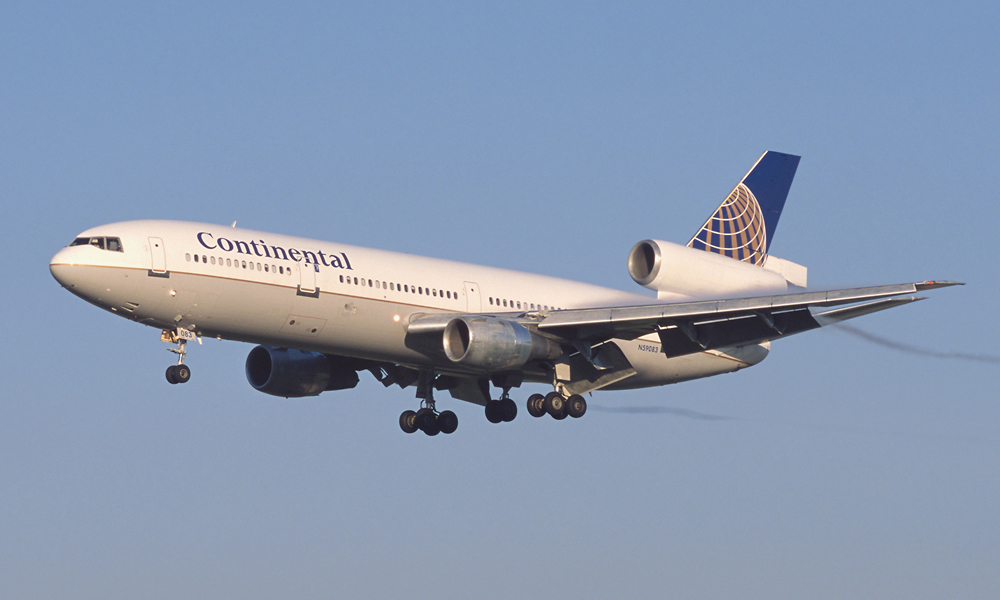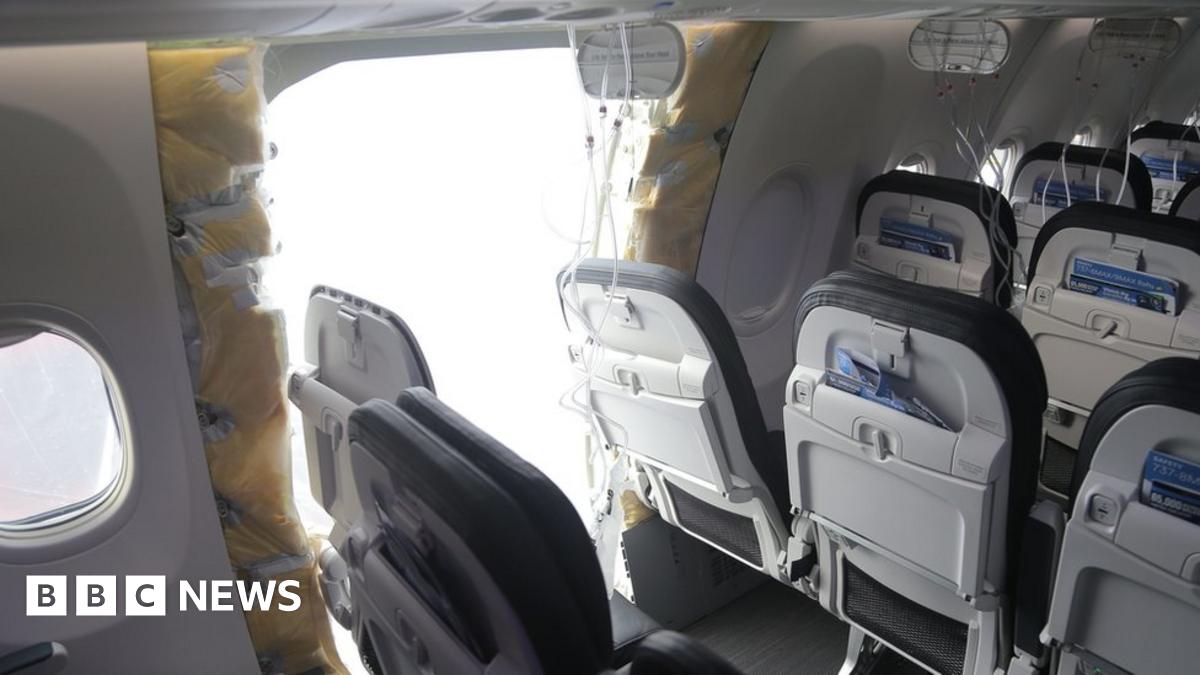Yeah it seems its an area used as an emergency exit by airlines, in this case Alaska airlines do not, quite unbelievable no one was sitting there.
Incredible luck really, unless there is a reason they keep that row empty.
Yeah it seems its an area used as an emergency exit by airlines, in this case Alaska airlines do not, quite unbelievable no one was sitting there.
I’m with you there, but there’s always someone who’ll say that Ryanair is the greatest thing since sliced bread.
I used to subscribe to a very small local forum, probably no more than 100-150 posters, and someone mentioned Ryanair favourably once, so I replied that if I was going to Faro, I’d rather pay £150 plus more and go with TAP or BA than that outfit.
I was buried in venom for my impetuosity, most saying that I was a snob with more money than sense.
The post that stuck out for me said, “You sound like one of those class traitors, who only eat in restaurants that have white tablecloths, and then show off by tipping the waiter!”
From what I've read, and the little I understand, they did a merger and basically acquired all the bad habits and management of the company they acquired (which was failing), and ended up with basically non technical people running the show rather than management who actually understood and in many cases had engineering experience.No I appreciate that. I just don't like Ryanair find it horrible experience! I've flown on them half a dozen times and point blank refuse now.
I hadn't appreciated how much of an issue this plane was though. You're right it does make you concerned, I thought Boeing were generally good? So what happened in this plane? Cheap procurement/fit out/testing?
Had quick Google and this interesting article was one of the first hits -From what I've read, and the little I understand, they did a merger and basically acquired all the bad habits and management of the company they acquired (which was failing), and ended up with basically non technical people running the show rather than management who actually understood and in many cases had engineering experience.
Effectively the moved from being a company with a high level of technical and aviation understanding in management, to being one that is largely being run by accountants and business execs who don't understand/care about the reasons certain things were done despite being expensive.
The 737 max was basically the first "new" aircraft to come out after that changeover was largely complete, hence so many of the cut corners and decisions that make even non pilots/non engineers who have paid any attention to aircraft go "WHAT?" and "How the hell did they forget 90 years of hard won lessons!".
You see the same sort of thing in some other industries (modern cars with "touch screen" displays that give no tactile feedback), but with 300+ people at risk every time something utterly predictable goes wrong.

 qz.com
qz.com
Always remember the day I was flying on a BA Airbus A321 (this is going back probably around 15-20 years) and was sitting in the exit row near the back (not the ones at the back) which had a crewmember sitting there as well for takeoff and landing. Taking off the plastics on the inside of the plane are making a bit of racket (probably rubbing at the joins between the panels, and the cabin crew said to me, 'you wouldn't get that in a Boeing'. How times have changed.From what I've read, and the little I understand, they did a merger and basically acquired all the bad habits and management of the company they acquired (which was failing), and ended up with basically non technical people running the show rather than management who actually understood and in many cases had engineering experience.
Effectively the moved from being a company with a high level of technical and aviation understanding in management, to being one that is largely being run by accountants and business execs who don't understand/care about the reasons certain things were done despite being expensive.
The 737 max was basically the first "new" aircraft to come out after that changeover was largely complete, hence so many of the cut corners and decisions that make even non pilots/non engineers who have paid any attention to aircraft go "WHAT?" and "How the hell did they forget 90 years of hard won lessons!".
You see the same sort of thing in some other industries (modern cars with "touch screen" displays that give no tactile feedback), but with 300+ people at risk every time something utterly predictable goes wrong.
 I hope an 800 turns up next week, preferably with the newer thinner seats as then there is slightly more leg space (but still a squeeze)
I hope an 800 turns up next week, preferably with the newer thinner seats as then there is slightly more leg space (but still a squeeze)That's quite possibly one of the articles I read a couple of years back, IIRC there were a whole slate of them including some that had interviews with ex boeing staff who'd done things like take early retirement as they didn't want to be involved with the new management.Had quick Google and this interesting article was one of the first hits -

The 1997 merger that paved the way for the Boeing 737 Max crisis
Only now, with the plane indefinitely grounded, are we beginning to see the scale of its effects.qz.com
That's quite possibly one of the articles I read a couple of years back, IIRC there were a whole slate of them including some that had interviews with ex boeing staff who'd done things like take early retirement as they didn't want to be involved with the new management.

I suspect the fire suppression system wouldn't have done anything but slow any fire and given that fire was external there is little that any "system" could have done to slow it, instead it was relying on the materials used in construction and they seemed to hold up quite well given what happened.is Airbus ok too ... have to wait for the post mortem on the A350 ? did the fire suppression systems work following its collision in Japan and what were the toxic gases from GRP like.
Just to clarify - The A350 is the first civilian aircraft with a cargo hold fire suppression system for the area directly under the passenger cabin which uses Halon gas as its suppressant. It looks like it was the A350's central fuel tank which seems to have ruptured in the immediate aftermath and that Halon system (if used TBF) may have kept any internal fire in the cargo bay (right below peoples feet) pushed back for about a minute (looking at the cabin videos post landing) before it was overcome, by which time most passengers were out.
Airbus have a whole webpage devoted to its new A350 cargo bay fire suppressing system -
Protecting Aircraft and Passengers from Cargo Fires | Safety First
Cargo compartment linings are designed to provide an air-tight space, and are essential in protecting the aircraft and its occupants from fire and smoke.This article looks at how these composite components have come to play such an important role in Safety, and what can be done to make sure they...safetyfirst.airbus.com


This is alarming:

Alaska Airlines plane had warnings days before mid-air blowout
The jet involved in Friday's incident had been prevented from long trips over water, US investigators say.www.bbc.co.uk
Alaska Airlines placed restrictions on the Boeing plane involved in a dramatic mid-air blowout after pressurisation warnings in the days before Friday's incident, investigators say.
I really would have thought they would have grounded it until an explanation was found...
It is not clear if there is a link between the issues that led to those warnings, and the issue that caused the blowout on 5 January.
"An additional maintenance look" was requested but "not completed" before the incident, Ms Homendy said.

